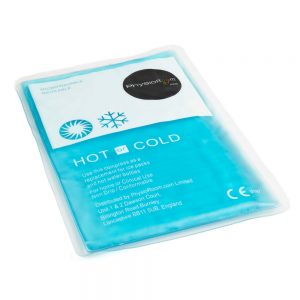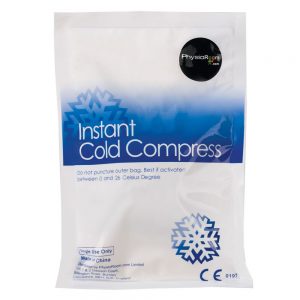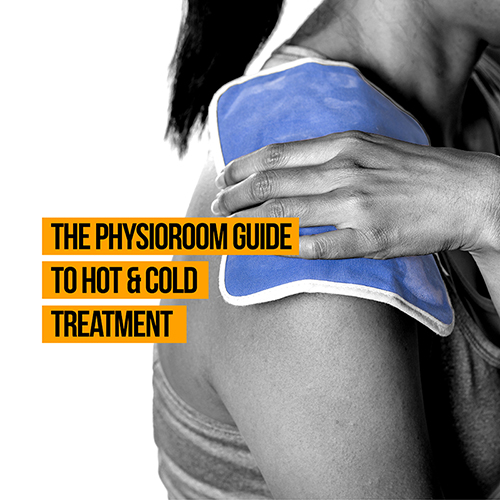Learn all there is to know about hot and cold treatment, including how it works, the treatments and products available, and more in our detailed buyers’ guide.
Injuries, however serious, are never nice to deal with and many don’t fully understand how to treat them, which can cause delays in the recovery period. Whether you’ve banged your head or pulled up feeling the back of your leg, different injuries require different types of therapy, combined with periods of rest and recuperation, and hot and cold treatment is one of the most effective but infrequently used recovery methods.
Nobody likes having to ice their injuries, and even though ice baths have become popular forms of recovery for professional and amateur athletes, there is still some resistance to this choice of therapy, but it does have healing powers.
If you think back to your childhood you would often put a bag of frozen peas on a bump or an impact injury sustained playing your favourite sport, but did you ever ask why that was the go-to method? Similarly, changing rooms up and down the country are often filled with the smell of Deep Heat and muscle rubs but again, why is that?
Hot and cold treatments are a highly effective way of bringing out any swelling and getting to work on the injuries to minimise your recovery time, so just why do we reach for the frozen peas or the heat pads instead of mixing the two together in contrasting periods?
This guide to hot and cold therapy will explain the benefits of this highly effective treatment, which is used everywhere from workplace accidents to school playground grazes and even World Cup Final injuries; as well as the different products used in hot and cold treatments that will help to get you back out there in no time at all.
What is hot and cold treatment, and how does it work?
The process of hot and cold therapy should always start as soon after the injury is sustained as possible in order to get to work on the knocks, aches, pain and stiffness.
Cryotherapy (to use the official title for ice or cold therapy), works by reducing the blood flow to the affected area of the body to significantly reduce any inflammation and swelling that may occur to take pain and discomfort out of the equation as much as possible.
Once the area has been cooled or iced, it is then treated with heat in order to get the blood flowing freely again once the swelling has been reduced. It may sound like a strange concept to slow the blood flow down only to speed it up again soon after, but it helps to “clean” the affected area and to ensure that fresh blood with all of its nutrients can run through the affected area of the body.
In addition to being one of the most effective forms of treatment, hot and cold therapy is also one of the least complicated. All you need are two things – something hot, and something cold. This could be anything from Deep Freeze spray or ice packs for the cold therapy or muscle rubs and reusable heat pads for the heat therapy.
Once you’ve got everything together, the process of hot and cold therapy is simple and straightforward.
Here’s a five-step overview of what you need to do:
- Get yourself comfortable and, where possible, raise the affected area before applying the first round of ice therapy to the injury for approximately two minutes.
- While it’s not the nicest of treatments, it is important to leave the ice on for as long as possible, before swapping for the heat therapy for two minutes.
- When the first round of hot and cold treatment has been completed it’s important that you do not stop there. The first round starts the process but you should repeat the cycle three times and always finish with cold therapy.
- After three rounds of the treatment you should return your ice pack to the freezer and allow your heat treatment to cool.
- You can then repeat the three-round cycle throughout the day in order to maximise its impact and to reduce the pain and swelling as quickly as possible.
The benefits of hot and cold treatment
Heat treatments are used mostly when it comes to musculoskeletal injuries, such as pulled muscles and any pain in the joints. There are a number of different ways to use heat therapy ranging from quick-fixes like Deep Heat spray to more long-term treatments such as heat packs that can be applied to areas such as the lower back to provide therapeutic heat throughout the day to restore movement.
In contrast, ice therapy is used for impact-style injuries and aims to prevent the inflammation and any bleeding. Icing the affected area as quickly as possible can help to cool the tissues and minimise the amount of damage and, therefore, repair required.
To summarise, the main benefits of hot and cold treatment include:
- Fast and effective relief from pain
- Reduction of swelling or stiffness in the joints
- Speeds up the healing process
When to use hot and cold treatments separately
There are some situations where hot and cold treatment may not be effective and you’re best to use one or the other. Heat therapy, as mentioned previously, works by improving the circulation of blood around the body in order to relieve the discomfort and to soothe the muscles.
There are all kinds of different heat treatments that you can try, ranging from the go-to muscle sprays and rubs used to treat muscular or joint injuries; to single-use or reusable heat packs that can be applied to the painful area to provide a slow but effective release of heat throughout the day, and these are commonly used on areas such as the lower back or shoulders.
However, if the affected area is bruised or swollen it is best to use cold therapy, which works to reduce the inflammation around joints and tendons. This form of treatment is typically used on impact injuries such as blows to the head or knocks to the fingers. Ice treatments can range from coolant sprays such as Deep Freeze to ice packs and even ice baths in some cases.
When using the two different treatments separately it is best to use them for longer periods than you would when using them together. It is best to use ice therapy for around 10 to 15 minutes, several times a day, while keeping the area elevated.
Heat therapy, on the other hand, can be used for longer periods of time depending on your course of treatment. If you’re using a microwavable heat pack then you should apply it to the affected area for around 15 to 20 minutes, while Deep Heat patches can be left on the sore or painful part of the body – such as the back – for several hours or until the patch goes cold.
Here’s are a couple of options to cool or heat until your hearts content:
Gel-Based Packs:

Gel-based hot or cold packs, or pouches, or compresses, whatever term you prefer, are a pouch that contains soft gel that conducts heat or cold.
The PhysioRoom.com Reusable Hot / Cold Gel Pack is the best of both worlds. This versatile 25cm x 17cm mouldable pack can be used as either a hot OR cold pack, meaning you can use it as an ice pack in the early stages of injury and use it as a heat pack down the line to speed up the healing process.
To use a gel pack, simply cool in the refrigerator or freezer is intending to use as a cold pack, or warm in hot water (or microwave) to use it as a heat pack.
Instant Packs:

Instant packs, be it hot or cold, are pouches that contain a burstable liquid pouch that when burst reacts with the chemicals inside to conducts cold or heat.
The PhysioRoom.com Instant Ice Pack is a 22cm x 14cm pouch is a good example, it can be used any time, anywhere and is perfect for pitchside or when you don’t have access to a freezer or ice.
No pre-planning needed here, just activate the ice pack by squeezing the internal compartment. This starts a chemical reaction that instantly makes the pack cold. The Instant Ice Pack stays cold for 15 to 20 minutes, making it ideal for the early treatment of sports injuries.


